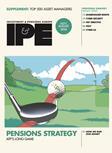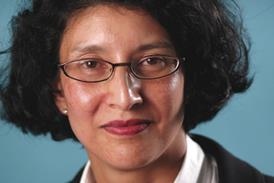The pension reform that was the focus of attention for years is no longer on the pension industry’s agenda, according to Guido Blasco, a consultant at Hewitt in Milan. “The consensus is that the reform works, so the debate is no longer about the reforms themselves but about the proposals on TFR,” he says.
The TFR is an end-of-job reward, a deferred compensation item that used to be retained on an employer’s books until an employee leaves a company, either to go elsewhere or to retire. Under the pension reform an employee must decide whether the TFR contributions will remain with the company or be transferred to a pension fund.
To date the focus has been on the impact of the decision on the companies. In effect the TFR represented a medium-term loan from employees at lower than market interest rates. They have responded by demanding compensation for the TFR loss, have criticised the tax breaks envisaged in the current draft of the reform decrees and have demanded that the government come up with measures to lower the cost of labour.
The question was the subject of a meeting in July between employers’ and trade union representatives and labour and social affairs minister Roberto Maroni that was expected to be confrontational.
“Just prior to the meeting it appeared that the participants would be willing to cut each others’ throats,” says Blasco. “But it didn’t happen. Indeed, it appears that the meeting was very constructive. The minister said that he understood the points made by the employers and unions, said that he would look for additional financial resources from the treasury ministry, and scheduled a further meeting.”
A failure to reach an agreement could derail the reform timetable. Under the Italian constitution, in certain circumstances governments are given authority to create legislation through decrees, but within a prescribed time frame. For the pension reform the deadline is the end of September, after which the measure would have to return to parliament.
But for Blasco the devil is in the detail. “I am Italian so I always wait for the final draft,” he says. “It is useless and time consuming to focus on the first draft which everybody knows will be amended. But I believe that this time I can see the light at the end of the tunnel and it’s not an oncoming train.”
However, what appears to have been overlooked is the impact the flow of TFR money will have on the pension funds.
“We are talking TFR allocations of about e13bn a year,” says Blasco. “If e3bn is not touched because it belongs to people who will retire shortly and consequently it’s useless for them to make an investment for only a couple of years that leaves €10bn, which represents at least six-times the current annual flow into pension funds. It’s realistic to anticipate that some 70% of this is going to be invested. So quite soon pension funds will have to manage a large amount of money. And I am not sure our financial markets are ready for that.”
But Andrea Girardelli, operations director of chemical and pharmaceutical employees’ industry-wide pension scheme Fonchim, does not share this concern. “The TFR is a never-ending story,” he says. “I don’t know what percentage of the TFR will flow into the system. I expect that more people will opt for pension funds but an understanding of this opportunity will not come in 15 minutes. It takes time. We already a have 62% penetration of employees in the chemical and pharmaceutical sector, so while we will increase our market share I don’t think it will be by so much.”
Fonchim performed well last year, Girardelli says. “The portfolio is almost the same as the year before but maybe we were a bit short on the bond side and this had something like a 20-30bps impact on the performance.”
Fonchim has three compartments. “Our main fund, the Stabilità fund, accounts for some 93% of our portfolio and was allocated with 30% in equities and 70% in bonds, which is the classic breakdown of assets in most Italian investments,” he says. “Crescita, which accounts for 2% of our investments, was 60% equities and 40% bonds, while the most conservative, the Moneta accounting for 5% of the total portfolio, was 100% sovereign bonds.”
The performance on the year was 7.65% for Crescita, 4.74% for Stabilità and 2.09% for Moneta. “It was a very good year for equities but there was no great movement in the interest rate,” says Girardelli. “On the long-term side of the curve interests saw an element of volatility that could represent an opportunity for the managers. Ours did their best.”
Currently, Fonchim has no allocation to alternative asset classes but, says Girardelli, there may be in the future. “We changed our asset managers in October. Now Crescita’s asset manager is Pioneer, Rothschild is managing Moneta and Stabilità has one balanced sub-compartment managed by Duemme, another balanced compartment managed by Pioneer, a bond compartment managed by Crédit Agricole, another bond compartment managed by Sao Paolo, a corporate bond compartment managed by Duemme and an equity compartment managed by Templeton. If you put together bonds and equities of these six compartments you end up with 30% in equities and 70% in bonds.”
But in the past Fonchim’s members have shown themselves to be prudent and so may not be attracted by the prospects of more adventurous asset classes. “Two years ago we gave extra options to people in one compartment in which everybody was invested and the take-up was only 7%,” recalls Girardelli.
By contrast, Inarcassa has 14% of total assets allocated to non-traditional investments such as hedge funds and private equity. “A further 39% of the portfolio is in bonds 18% in shares, 27% in real estate and 2% in liquidity,” says president Paola Muratorio.
Under Italy’s pension system Inarcassa is a mandatory first-pillar pension fund for architects and engineers. ”Now the pension reform gives us the opportunity to create a second pillar fund for our members on the proviso that the assets between the two schemes are kept separate,” says Muratorio.
But Inarcassa will not be embarrassed by a potentially destabilising flow of TFR money. “The difference is that for professionals second pillar contributions are made totally at their own expense and so unlike other workers they don’t have the TFR,” Muratorio adds.






No comments yet